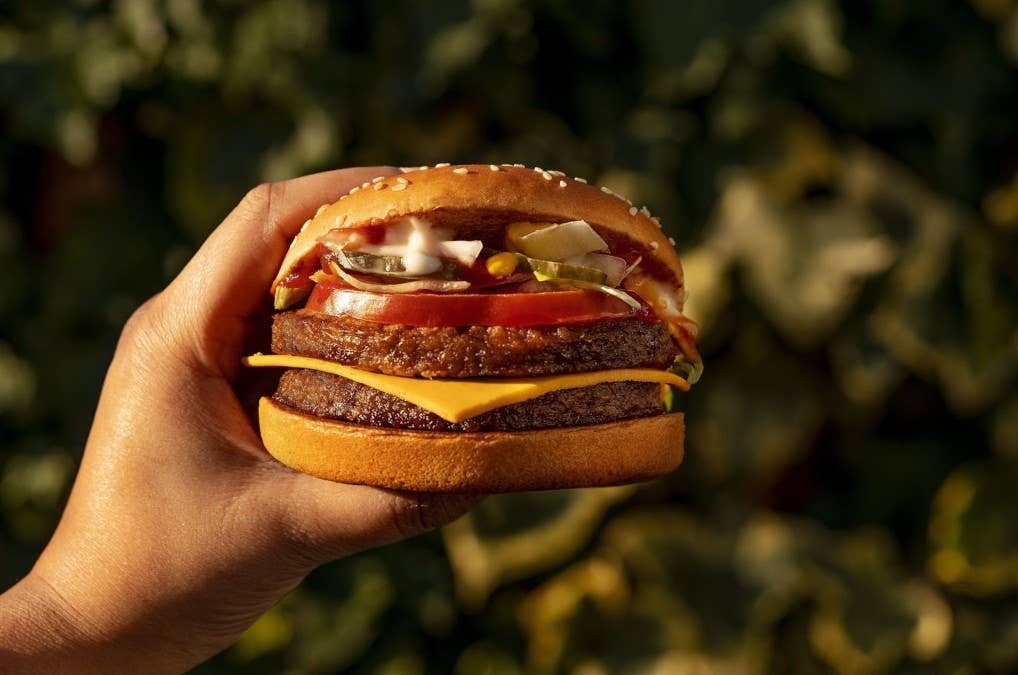
Too Much Fluoride Is Linked to Higher Risk of Bone Fractures, New Study Finds
Adding fluoride to drinking water is common practice throughout the world. Fluoride was first added to drinking water in cities across the US in the 1940s as a safety measure to prevent tooth decay, and it was a game-changer to dental health. We went from a country in which almost every adult and child had some degree of tooth decay to a 60 percent drop in the prevalence of cavities in children.
But there’s always been a lingering question about fluoridation in drinking water: How much is too much? Or, too little? Researchers have now begun to document the presence of health conditions believed to be associated with too much fluoridation: A type of bone cancer called osteosarcoma, the discoloration of teeth, and now, add to the list: bone fractures.
A new study published in the journal Environmental Health Perspectives finds that consuming too much fluoride in drinking water can—over a period of time—lead to hip fractures in postmenopausal women. It can lead to a denser, but a more fragile skeleton, writes the study author Agneta Åkesson, professor of epidemiology with the Karolinska Institute in Sweden.
“Our findings suggest that long-term consumption of tap water with a fluoride concentration of 1 mg/L—which is below the 1.5 mg/L maximum concentration recommended by the World Health Organization—may adversely affect bone health in postmenopausal women,” she writes. The amount of fluoride in tap water throughout the United States is decided at a local level, and in 1962 the recommended level in public water supplies was between 0.7 and 1.2 milligrams of fluoride per liter (mg/L) of drinking water to help prevent tooth decay.
This recommendation changed in 2015 to a level of 0.7 mg/L, a change "made in part to account for the fact that people now get more fluoride from other sources (such as toothpaste) than in the past," according to the American Cancer Society, which adds: "Natural drinking water sources in the US have an average fluoride level of about 0.2 mg/L, although in some places it can be much higher." In some places, according to the Environmental Protection Agency, the level is as high as 4.0/mg/L, or a multiple of what is now considered safe.
Fluoride Is Linked to Risk of Bone Fractures and Even a Type of Bone Cancer
In this study, which was conducted in Sweden between 2004 and 2009, the average amount of fluoride detected in urine samples was 1.2 mg/g or 2.2 mg/d when measured by dietary intake for drinking water, coffee, or tea. (Measuring fluoride in urine is the best way to see what is getting into the body through all sources: water, toothpaste, mouthwash, and drinks.)
The study included 8,378 postmenopausal women in their 60s who were followed through 2017. They lived in cities where fluoride concentrations ranged from zero to 1 mg/L.
Women who were exposed to higher levels of fluoride had a higher bone mineral density at the start of the study, but contrary to conventional wisdom, this density wasn’t found to be protective. Women who had higher traces of fluoride in their urine also had hip fractures 50 percent more often than women with less fluoride in their urine. And, for those whose fluoride was measured through diet, their fracture risk was slightly higher at 59 percent.
The effects of fluoride on bone mineral density have been documented in other studies by researchers who reported stronger associations primarily affecting the lumbar spine and femoral neck of the hip.
Dr. Åkesson says a key point to consider is the long-term exposure to excess fluoride over decades, a condition called skeletal fluorosis. Fluoride is absorbed into the blood and accumulates in bone (and teeth). This build-up in the joints can lead to joint stiffness, pain and bone fragility. When fluoride builds up in teeth, a condition called dental fluorosis, it can cause pitting and staining in the developing permanent teeth of young children.
"Because fluoride accumulates in bone, low-dose exposures over extended periods also may be sufficient to produce adverse effects. Our finding, of stronger associations with urine fluoride when restricted to women, is likely [associated with] consistent drinking water fluoride levels of at least 20 years,” she wrote.
Studies have been published in recent years showing a connection between excess fluoride and a host of health conditions, such as a type of bone cancer called osteosarcoma, explains the American Cancer Society. Too much fluoridation in the water has also been known to cause dental fluorosis, which is marked by discolored teeth with white marks and compromised enamel.
The concern about bone health and excess fluoridation has been studied by researchers throughout the world. It’s a complex subject because high concentrations of fluoride occur naturally in some regions of the world. The World Health Organization points to “fluoride belts” throughout the world “at the foot of high mountains and in areas where the sea has made geological deposits.” One fluoride belt stretches from Syria through Jordan, Egypt, Libya, Algeria, Sudan, and Kenya. Another stretches from Turkey through Iraq, Iran, Afghanistan, India, northern Thailand, and China.
In the U.S. we made a complete turnaround from the lack of fluoride in drinking water to consuming too much of this protective mineral, which is now added to toothpaste and mouthwashes. Americans were getting too much of a good thing, according to a 2010 study by the Centers for Disease Control and Prevention. The CDC found that dental fluorosis was present in 40.6 percent of teens between the ages of 12 and 15, and 33.4 percent among children between 6-11 years old.
So, one year later, in 2015, to account for fluoride added to toothpaste and mouthwashes, the U.S. Department of Health and Human Services lowered the recommended fluoride concentration to 0.7 parts per million from a recommended “range” of 0.7 to 1.2 PPM.
How can you protect yourself?
Find out how much fluoride is in your drinking water and make a plan to either drink bottled or skip the fluoridated toothpaste and mouth rinses. If you or your children have a high-risk health condition, talk to your doctor. You may want to consider investing in a reverse osmosis filtration system or use toothpaste and mouthwash that doesn't include fluoride on the label.
The Top 10 Plant-Based Sources of Calcium
1. Pinto Beans
Pinto beans have 78.7 milligrams in one cup so add these to any salad, dip or burrito.
2. Molasses
Molasses has 82 milligrams in 2 tablespoons. Use it in baking instead of sugar. Look for Blackstrap molasses, and keep in mind that these have been used in recipes for 100s of years, especially in the South. Molasses is also believed to help relieve stress and anxiety.
3. Tempeh
Tempeh has 96 milligrams of calcium in 100 grams when cooked. You can make chicken substitute from it.
4. Tofu
Tofu has about 104mg in one ounce when prepared pan-fried. Throw it in your stir fry, or order it at your next Chinese meal with veggies. It's the perfect non-meat protein. (Note look for the calcium quotient on the Nutrition Facts on the label.)
5. Bok Choy
Bok choy has 158 milligrams of calcium in one cup. Add it to your soup, stir fry or salad.
6. Soybeans
Soybeans have 175 milligrams of calcium per cup. Sprinkle them on a salad.
7. Kale
Kale has 177 milligrams in one cup. The heroic green makes a great salad, goes in smoothies and delivers a healthy dose of fiber as well.
8. Turnip Greens
Turnip greens have 197 milligrams in one cup. Add them to your favorite soup or smoothie.
10. Collard Greens
Collard greens have 268 milligrams of calcium in one cup. Substitute it for string beans.
10. Milk Alternatives
Alternate milks like almond, soy or rice milk have 300-500 milligrams of calcium in 8 ounces so use any of these on your cereal or in your morning smoothie.
More From The Beet






